Overlooking the Durance River near the town of Avignon, the Bonpas Charterhouse is a fortified monastery that was built by the Order of the Knights of the Hospital of Saint John of Jerusalem in the 12th century. Its name is linked to the history of the torrential Durance River, which could only be crossed at the ford located just below the monastery. Bonpas’ name comes from the Latin bonus passus, meaning “safe crossing point”.
CHARLES MARTEL & CHARLEMAGNE
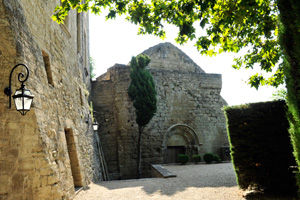
The Notre Dame de Bonpas chapel (a national historic monument) was built between 739 and 805. Though the first texts that mention the church of Sainte Marie de Bonpas date back to the reign of Charlemagne (805), it is possible that its construction is owed to Charles Martel (circa 739) to thank the people of Avignon for their bravery during battle with the Saracens.
THE FIRST STONES OF BONPAS ARE LAID
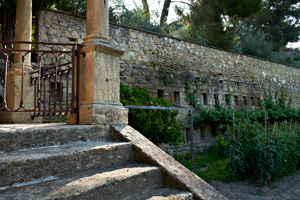
The Bishop of Avignon made a handwritten donation to the Bonpas monks. A new chapel was built on the foundations of the existing 9th-century chapel.
"BONUS PASSUS"
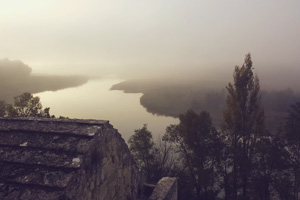
Alphonse of Poitiers, brother to King Louis IX, gave all of his rights in the Comtat Venaissin enclave to the Brothers Hospitallers of the Bonpas bridge over the Durance River. In 1278, the Pope put them under the jurisdiction of the Brothers Hospitallers of Saint John of Jerusalem, who, from then on were responsible for welcoming travellers and seeing that they made a safe crossing (bonus passus) over the river.
"THE WINE IS STEADY WHILE THE WORLD IS TURNING"
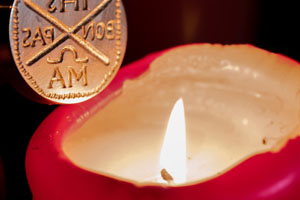
Pope John XXII, based in Avignon, gave Notre Dame de Bonpas to the Carthusian monks. Their motto was “Stat crux dum volvitur orbis” (The cross is steady while the world is turning), which gave rise to the origin of what became and still is the Bonpas motto: “The wine is steady while the world is turning”.
ECONOMIC TAKEOFF & CULTIVATION
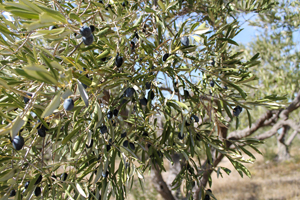 Activities related to viticulture, wine and the cultivation of olives were at the heart of the Bonpas Charterhouse’s economic development.
Activities related to viticulture, wine and the cultivation of olives were at the heart of the Bonpas Charterhouse’s economic development.
THE FRENCH REVOLUTION & DECLINE
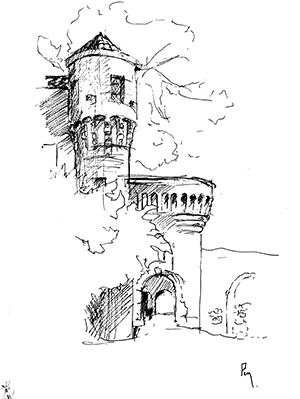 The French Revolution resulted in the confiscation of church property. The Carthusians were expelled from the monastery. The Bonpas Charterhouse was pillaged. A dozen different owners followed thereafter, using the buildings primarily to exploit nearby stone quarries and for the manufacture of textiles.
The French Revolution resulted in the confiscation of church property. The Carthusians were expelled from the monastery. The Bonpas Charterhouse was pillaged. A dozen different owners followed thereafter, using the buildings primarily to exploit nearby stone quarries and for the manufacture of textiles.
NAPOLEON'S VISIT
 On his way to the island of Elba, Napoleon, as he contemplated the Charterhouse, is said to have exclaimed, “In another century, a whim of destiny might have had me end up in this cloister; even then, I would have made a name for myself. Catholicism was changing the world, and all of those congregations of monks were like armies in need of a leader”.
On his way to the island of Elba, Napoleon, as he contemplated the Charterhouse, is said to have exclaimed, “In another century, a whim of destiny might have had me end up in this cloister; even then, I would have made a name for myself. Catholicism was changing the world, and all of those congregations of monks were like armies in need of a leader”.
REVIVAL OF THE BONPAS CHARTERHOUSE
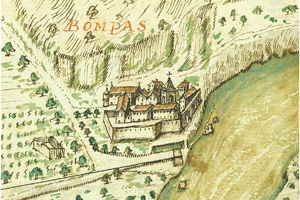
The Charterhouse was bought by an established family from Gap that was charmed by the premises and they undertook renovations. In 1949, the chapel was reconsecrated and, in 1952, the site was classified as a National Historic Monument. In 2003, a French family that is a major player in today’s wine industry purchased the site and brought it back to life.
WINE PRODUCTION
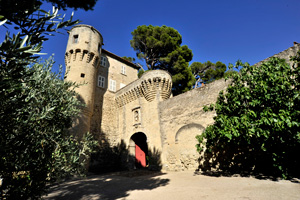
Today, the Chartreuse stands proud, on the banks of the Durance where it is dedicated to the production of wine thus perpetuating the heritage of the monks.